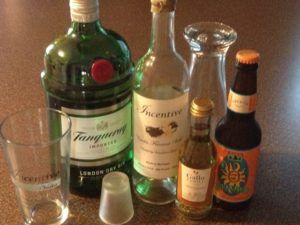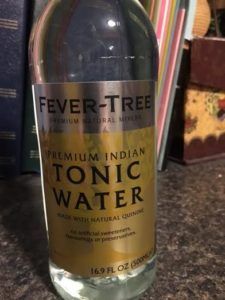Friday

BYCU
My small town had a stroke of good fortune this month: a new Meijer store opened up here. It's the third biggest in Michigan.
I took my daughters there for our first visit Wednesday night and was greatly impressed. I don't care much for shopping, but I hate going to Walmart, so I'm pleased to have a slightly classier alternative.
And I was really pleased to see their liquor selection. It's pretty big.
And even better: They have a great selection of mixers. They, for instance, had six different kinds of ginger beer. But the thing I liked the most: They had a bunch of different tonics.
Which is great timing because we are now entering full swing into the gin and tonic season.
I've been reading a fair amount about gin lately, and one thing I keep seeing is this: Americans don't appreciate the difference among tonic waters. Sure, Americans respect gin differences: top shelf, mid-shelf, low shelf. But unlike Europeans, who have long respected the immense difference a good tonic can make, Americans treat all tonics the same.
Until now. Right about now, America is waking up to the differences, and high-end tonic waters are hitting the market.
My local Meijer is the first store I've seen these higher end tonics, so even though I choked on the price ($2.75 for 17 ounces . . . I normally pay 99 cents for two liters), I bought a bottle Wednesday night. I then worked late last night, knocking off at 8:00, and opened it up, using it to mix New Amsterdam gin (a great gin, especially if you want less juniper taste).
The result?
It was great. It definitely makes a better gin and tonic than the Kroger brand tonic I normally use. It even gives the drink a slightly different taste than I get with ordinary tonic, though I couldn't identify it.
Is it worth the extra money? I'm still not sure about that one.
Round two of experimentation resumes this evening.




